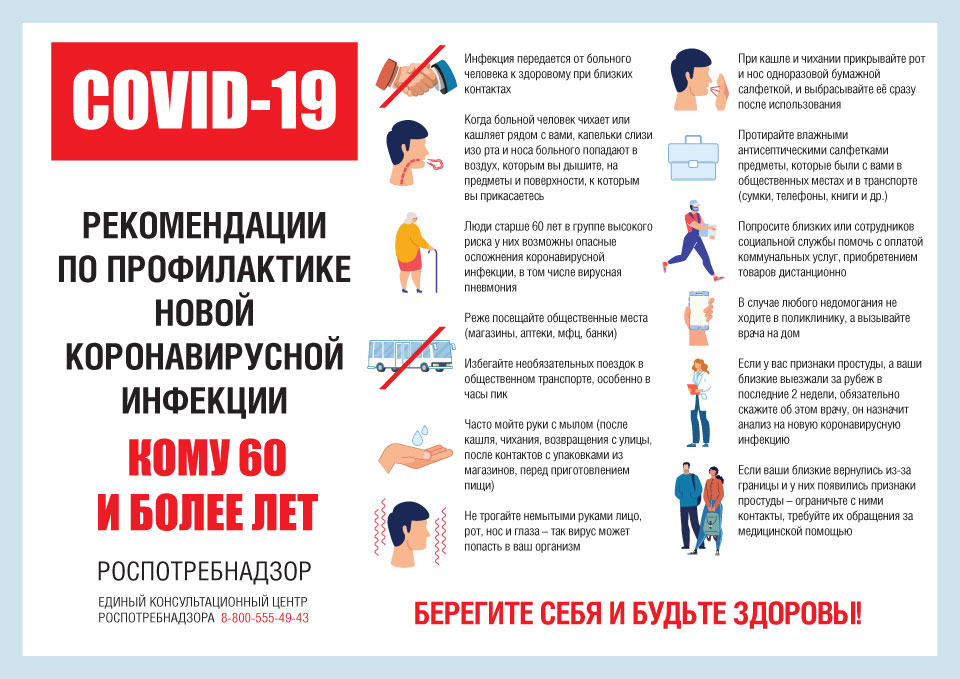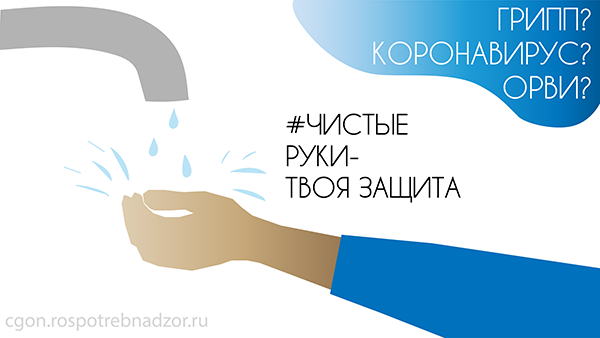(information is prepared according to the website of Rospotrebnadzor)

Flu, coronavirus infection and other acute respiratory viral infections (ARVI) are in the first place on number of annually getting sick people
Despite the continuous efforts directed to fight against causative agents of flu, coronavirus infection and other ARVI it isn't possible to defeat them still.
It is connected with the fact that viruses, first of all viruses of flu and coronaviruses have ability to change the structure and the mutating virus, is capable to strike the person again. So, the person who had flu has a good immune barrier, but nevertheless the new changed virus, is capable to get easily through him as the organism didn't develop immunity against this type of a virus yet.
To whom the meeting with a virus is most dangerous?
Especially hard children and elderly people have an infection, complications which can develop in disease time are very dangerous to these age groups. Children have more a serious illness because their immune system didn't meet this virus yet, and for elderly people, also, as well as for people with chronic diseases, the virus is dangerous because of the weakened immune system.

- Children
- People are older than 60 years
- People with chronic diseases of lungs (bronchial asthma, a chronic obstructive pulmonary disease)
- People with chronic diseases of a cardiovascular system (congenital heart diseases, coronary heart disease, heart failure)
- Pregnant women
- Health system workers
- Workers of public transport, catering establishments
How there is infection?
The infection is transmitted from the sick person healthy through the smallest droplets of saliva or slime which stand out during sneezing, conversation cough. Also contact transfer is possible.
Symptoms
Depending on the activator of a concrete type the symptoms can differ considerably, both on expressiveness degree, and by combination options.
- Temperature increase
- Fever, general malaise, weakness headache, muscle pains
- A loss of appetite, nausea and vomiting are possible
- Conjunctivitis (perhaps)
- Diarrhea (perhaps)
- On average, the disease lasts about 5 days. If temperature keeps longer, perhaps, there were complications.
- Pneumonia
- Encephalitis, meningitis
- Pregnancy complications, development of pathology of a fruit
- Exacerbation of chronic diseases
Treatment of a disease is carried out under control of the doctor who only after survey of the patient appoints the scheme of treatment and makes other recommendations. The diseased has to observe a bed rest, fully eat and drink more liquid.

To accept antibiotics in the first days of a disease – a big mistake. Antibiotics aren't capable to cope with a virus, besides, they adversely influence normal microflora. Antibiotics are appointed only by the doctor, only in case of development of the complications caused by accession of a bacterial infection. To take the antibacterial drugs as prevention of development of complications - it is dangerous and useless.
The sick person has to stay at home and not create threat of infection of people around.




The most effective way of prevention of flu is annual vaccination. The players of vaccine against flu are changed annually. First of all, it is recommended to be vaccinated by that who enters into risk group. Optimum time for vaccination October-November. Vaccination of children against flu is possible, since 6-month age.
Vaccines against the majority of causative agents of acute respiratory viral infections aren't developed.
- Often and thoroughly wash hands
- Avoid contacts with the coughing people
- Adhere to a healthy lifestyle (dream, healthy food, physical activity)
- Drink more liquid
- Regularly air and moisten air indoors in which are
- More rare be in crowded places
- Use a mask when are in transport or in crowded places
- Avoid embraces, kisses and handshakes at meetings
- Don't touch a face, eyes, a nose dirty hands

- Put on a mask in the enclosed space, in places of a big congestion of people, at contacts with people with symptoms of a viral respiratory disease
- The mask has to adjoin densely to the person and close a mouth, a nose and a chin
- In the presence of the sewed fastening in a nose, he should be pressed to a nose back densely
- If on a mask there are special folds, – straighten them
- Change a mask for new each 2-3 hours or is more often
- Throw out a mask in a ballot box right after use
- After touch to the used mask, – carefully wash up hands with soap
- It is inexpedient to be masked on deserted open spaces
- It is impossible to reuse a mask
- Only in combination with careful hygiene of hands and quarantine measures use of a mask will be most effective for prevention of infection and spread of an infection

organization of the educational process within the framework of covid
Become the volunteer #мывместе2020рф

